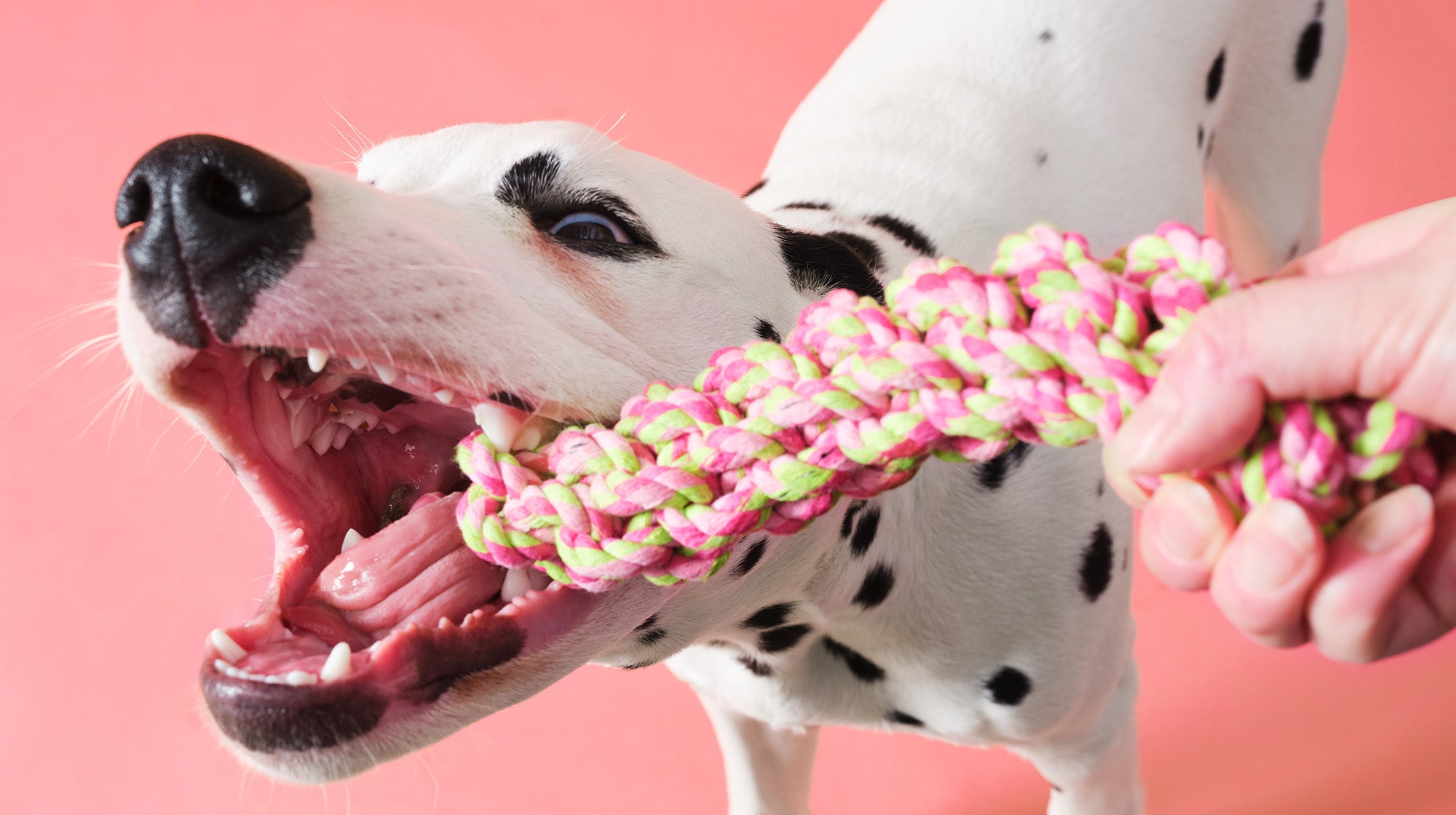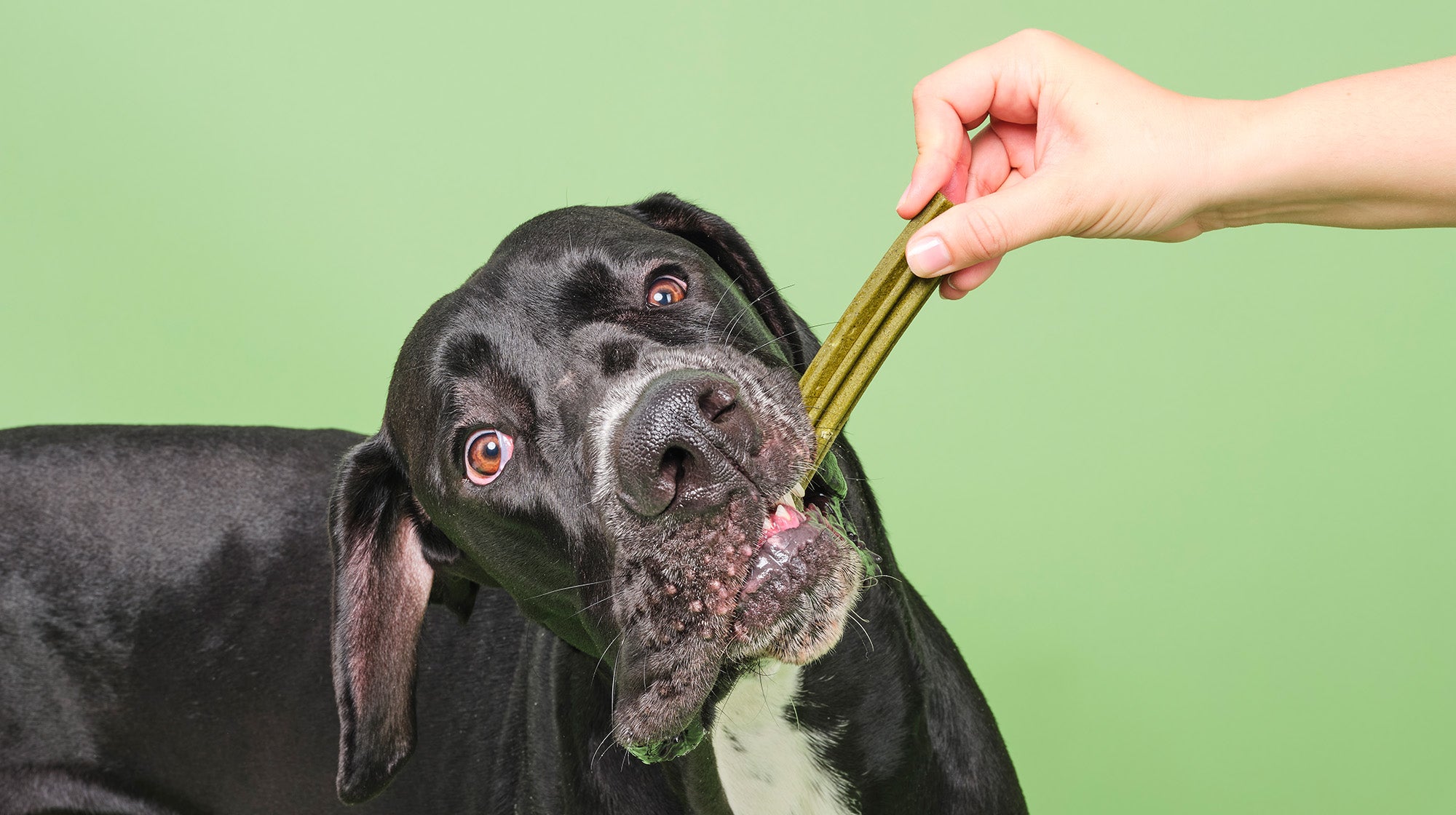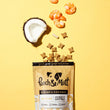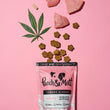
FREE UK DELIVERY ON ORDERS OVER £39.99
There’s nothing more lovable than seeing your dog’s big old grin as they look right at you - but that toothy smile needs love from us too! We’re raised from an early age to carefully look after our teeth, and it’s just as important that our pooches get that same treatment.
Cleaning your dog’s teeth isn’t always simple, though. Many pooch parents struggle to get safely near their dog’s face, let alone into their mouth with a strange bristled stick. We understand that it’s not always straight-forward, and may have you worrying about how to keep your dog’s teeth clean.
There are techniques to brushing a dog’s teeth, and alternative methods you can try to clean a dog’s teeth without brushing. Read on as we go into the step-by-step of cleaning your dog's teeth, why dental hygiene is important for your dog, signs of unhealthy dog teeth, and how often you should attempt the tricky task of dog teeth-cleaning.
So, how exactly do you go about the tricky task of brushing your dog’s teeth? Here we’ve laid out some steps for doggo teeth-cleaning, step-by-step. Remember to do this gradually and incrementally, perhaps a few times until they get used to the process.

You should clean your dog’s teeth for the same reasons you clean your own - good dental hygiene ensures your dog has long-lasting, pain-free teeth, gums and mouth.
With good oral health care your dog will be more likely to stay happier and healthier into old age, rather than suffering from tooth decay or gum disease (also called periodontal disease) which can be painful for your dog, or at its worst, can even shorten their life. Not to mention, when dogs’ teeth are healthier, their breath stays relatively fresher.
There are plenty of signs that your dog’s teeth may not be at their best, or even that gum disease is setting in. Look out for the following, as they could indicate your pooch’s dental hygiene needs attention:

You should try to clean your dog’s teeth as often as possible. Ideally, it’s recommended to brush around 3-4 times a week, but even once a week is better than never. We know it can be tough to achieve this though, especially if your pooch won’t let you near their chops with a toothbrush. Supplementing an oral hygiene regime with alternative dog teeth-cleaning methods should help.
You might notice deep yellow colouring on your dog’s teeth, specifically near the gumline. This could indicate plaque and tartar build-up, which could lead to more serious oral problems that might have your pooch in pain.
To get rid of tartar or plaque from your dog’s teeth, brush their teeth more regularly, feed them dental chews or sticks, introduce dry food into their diet, or perhaps visit a vet for more advice. Read on for more detailed ideas.
Let’s be clear on this - nothing replaces a good brush of your dog’s teeth with a dedicated doggo toothbrush. If this isn’t always achievable, however, here are some tips for alternative methods of brushing:
Let’s go over the myriad ways you can remove plaque from your dog’s teeth without brushing…
Chew toys - It’s important that your dog’s teeth are getting ‘worked’ in some way by chewing and munching on things that offer some resistance, rather than just wet food. Chew toys that offer some friction on the teeth are great for keeping their teeth strong and clean.
Dental sticks for dogs - Dental sticks come in a variety of flavours and can include tasty, healthy ingredients for teeth and breath; like spirulina, moreish peanut butter or even hemp to help calm your dog. The motion of chewing on the sticks helps break down tartar build-up, so it’s a great idea to include these in your dog’s dental regime. Just remember, these do contain calories, so ensure they’re fed as part of your pooch’s daily allowance.
Doggy chews/treats - For the same reasons as above, getting your dog to munch on particularly chewy dental treats are a good option for teeth cleaning.
Oral spray for dogs - Special dental spray for dogs can go some way to improving the conditions of your dog’s teeth and mouth.
Dry food - If your dog only eats wet food, there has been some evidence to suggest that dry food helps break down tartar on a dog’s teeth. Perhaps try introducing dry food into your dog’s diet?
Finger brush - Some doggy toothbrushes sit on the end of your finger, so your pooch isn’t intimidated by a strange stick near their face. If your pooch isn’t a fan of the toothbrush, it could be worth a try.
Finger and toothpaste - Try gently rubbing toothpaste on your dog’s teeth with your finger. It’s not better than brushing but it could help them get used to a toothbrush.

If all else fails, and your pooch really won’t allow you to get anywhere near those peggys, chat to your vet about ultrasonic dog teeth cleaning.
This is a special procedure in which your dog is usually put under anaesthetic, and a handheld device is used to clean their teeth using ultrasonic vibrations. This is used to effectively break down plaque and tartar on your dog’s teeth and gently massage the gumline, without the ordeal of stressing your dog as it might when awake.
Ideally, this would be a supplementary treatment alongside regular teeth brushing.
To summarise, let’s go through the combination of ways to keep your dog’s teeth clean. A mixture of all would be ideal, as you should tackle your dog’s oral health from all angles!
However, just trying whatever works is at least going some way towards improving your pooch’s beloved grin. If you can’t manage these, especially the brushing, get in touch with a vet who’ll be able to help you more specifically.
We know it can be really tough to get a dog comfortable with their teeth being cleaned, and that can be guilt-inducing. Remember to introduce your dog’s teeth-cleaning regime gently and incrementally, and just know that even a few seconds of brushing is better than none at all!
If you’re concerned about your dog’s dental hygiene, or you think they may be suffering from symptoms of periodontal disease, be sure to visit a vet as soon as you can.
There are plenty of ways to supplement your dog’s teeth-brushing regime - including the use of healthy dental sticks for dogs.
Our tasty dental sticks contain irresistible natural ingredients such as peanut butter and spirulina, so your dog can’t help but munch, while freshening their breath and cleaning their teeth in the process.





Never miss a treat!
Subscribe to our newsletter and get blog articles amongst other treats delivered to your inbox




Comments (3)
I give my dog sooty his dental stick each morning and 1 chewable treat
Sooty is 8 now vet says he’s a healthy dog teethe good but I need a decent toothe paste for him
Sooty does not eat wet dog food very particular what he likes can you help
Hi Sharron,
Most pet stores, like Pets at Home, have a wide selection of different dog toothpastes and you might be able to find a flavour that Sooty likes! They often have meat flavoured toothpaste, which he might enjoy :)
When I got him, aged 6, my Westie x Cairn had terrible teeth; plaque and tartar. I brushed them every day and gave him a dentastix after his meal (kibble plus wet dog meat), but what really gave him sparkling pearly whites was finding a bone he liked. Now the vet says he has “great teeth”.
Leave a comment